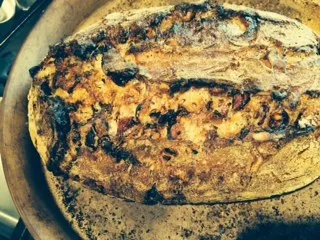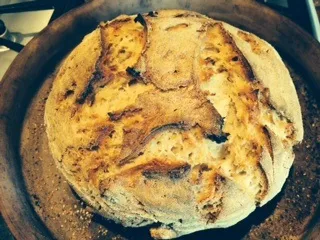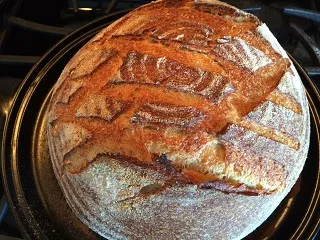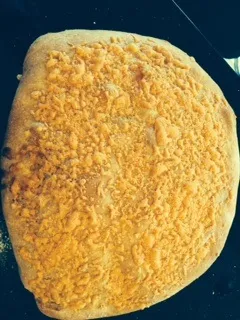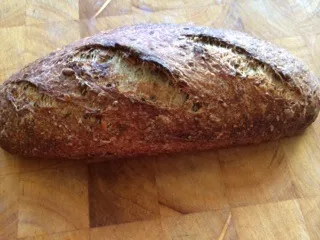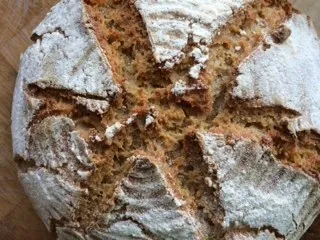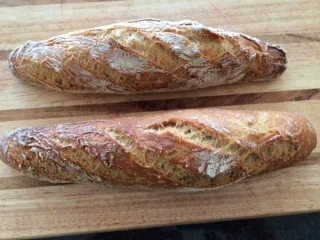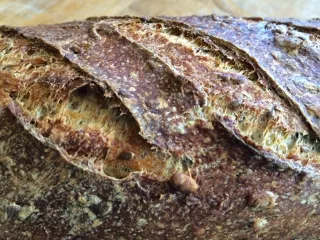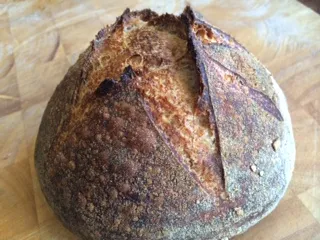Tartine sourdough with olives, lemon zest and herbes de provence
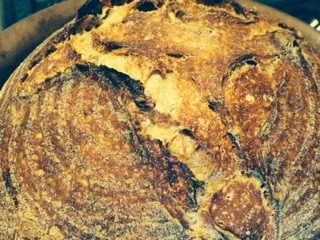
I have wanted to make this recipe for some time, and I have finally done it. Very exciting. There are just so many on the list to do! My husband and I love olives, and I make so many dishes with lemon zest that this seemed a natural for me. My starter was getting a bit tired, so I refreshed it just before beginning this recipe. I have adapted this recipe from a blogger, foodtravelthought.
Makes two large loaves. (The one below was 2 lbs. 6 oz).

